During my time with the Homeschool Review Crew, I have really come to appreciate the products we have received from Memoria Press. This time around we had the opportunity to review Traditional Spelling II, a comprehensive, phonetic approach to teaching spelling. This was perfect timing, as I had been looking for a more structured spelling program for Hannah, my second grader. When I saw that Traditional Spelling II was not only appropriate for 2nd-3rd graders, but also suitable for children who have used the First Start Reading from Memoria Press (which we reviewed in the past), I jumped at the chance to review it.
Traditional Spelling is a new product from Memoria Press. There are two levels available. Level I is meant to be used by 1st-2nd graders. As we are toward the end of the school year, I figured Level II would be more appropriate for Hannah.
We received the Student Book, the Teacher Manual, The Spelling Practice Sheets, plus the required supplements: The Phonics Flashcards and The Classical Phonics book. In order to implement the program you will also need some sentence strips for writing the words. I chose to make my own strips out of card stock. You will also need red, black, and blue markers. Finally, you will need to be able to photocopy the Spelling Test sheet which is found in the appendix of the Teacher Manual. Though I will say, the child could take the test on whatever lined paper you regularly use if you didn't have the ability to photocopy.
Let's look at each component.
The spiral-bound, consumable Student Book is 148 pages in length and contains 34 lessons plus a dictionary of the words from the lessons. Each lesson is spread over four pages and is meant to take five days to complete. The lessons progress from words with short vowel sounds, through lessons with words with long vowel sounds, hard and soft c and g, consonant blends, the three sounds of y, the two sounds of ey, r controlled vowels, irregular plurals, compound words, and more. You can find a table of contents which lists all the lessons in the samples. These samples are available on the website.
The spiral-bound Teacher Manual is 182 pages in length. This book begins with a General Lesson Overview which explains how to prep for and teach the lessons. Then a Sample Lesson Plan shows how to teach a lesson step-by-step. The bulk of the book is made up of the 34 lessons. Specific instructions are given for each day of each lesson, along with the list of phonics flashcards and pages in the Classical Phonics book that will be used. These instructions are given on the outer and bottom portions of the pages, while the student book pages (with answers) are inset in the upper inside section.
The Teacher Manual also has the dictionary section that is found at the back of the Student Book. It then concludes with a 30 page appendix. Here you will find the Spelling Test Form, Spelling Review Games, Spelling Rules Reference Sheets, a list of Common English Contractions, a Phonics Overview for the Teacher, and the Colorful Letters Key.
The softcover Spelling Practice Sheets book contains one practice sheet for each of the 34 lessons in Traditional Spelling II.
As you can see, there are two columns for the child to practice their words in. If you think your child will need additional practice, permission is granted to reproduce the sheets for a single student in your own home.
The set of 284 Phonics Flashcards measure 4 1/4 wide by 5 1/2 inches long. There are nine phonogram categories, which are "organized for easy reference and to give some rational order to the irregularities of English spelling." They are organized into the following groups:
- I- Alphabet
- II- Letters with more than one sound
- III- Consonant Teams A
- IV- Initial and final consonant blends
- V- Vowel Teams A (long and short vowels)
- VI- Consonant Teams B
- VII- Vowel Teams B (five more vowel sounds)
- VIII- R-Controlled vowels
- IX- Advanced Letter Teams
- X- Common & Sight Words
On the front of the card you will find a picture which includes the phonogram being taught. On the reverse side you will find the word for the picture, plus a list of words that contain this sound. There may even be the phonetic spelling of the sound for blends or teams.
The final item we received is the second edition of the Classical Phonics: A Child's Guide to Word Mastery book.
The spiral-bound Classical Phonics book is 139 pages long. This book of word lists is slightly smaller than the other books we received. This book is primarily used by Memoria Press users in Kindergarten and First grade while learning to read. It is split into four parts plus an appendix. Part one focuses on short-vowel words, part two focuses on long-vowel words, part three adds ten more vowel sounds, and part four is advanced phonics. This book is used with the spelling program to give children practice reading more words that share the sounds they learn in each lesson.
Let's take a look at how the program is used.
Here is the first lesson all ready to go. Phonics Flashcards have been taken out of the deck and the word cards have been made.
Each lesson follows the same pattern.
On the first day of the lesson, before getting into the Student Book, the child is introduced to the words through the word cards that were prepared prior to the lesson. The child is to say the word, spell the word, and repeat the word. At this time we also give the definition and come up with a sentence. This was something I included the other children in. After Hannah said and spelled the word, we would all take turns trying to figure out the definition. After the children told me what they thought the meaning was, I would read the definition from the Teacher Manual. Then someone would give me a sentence.
I then let the other children get back to their individual work while Hannah and I worked on the remainder of her spelling lesson.
We would look at the Phonics Cards, say the sound and read the words on the reverse of the card. Then we worked in the Student Book
Day 1 and Day 2 are shown on the first double page spread.
The child is shown what the phonics focus for the lesson is, plus provided a list of the words in both print and cursive. Though I never thought about this before, I appreciate that the child knows from the first introduction of the words what the correct way to spell them is. I have seen other programs where the child is given the word list orally and is expected to try to write each word before being given the correct spelling. To me, the way Memoria Press does it makes more sense and is less confusing for children.
We use the prepared word cards while working on the activities in the book.
There are Word Study Questions and Guided Student Work activities on both Day 1 and Day 2. This is where the student explores the words, figuring out which words have which vowel sounds, consonant blends, consonant teams, or whatever the focus is for the lesson.
In addition to using the Student Book, we work on activities orally and on the whiteboard. During the week there are different activities for the student to work on. Though the instructions say to have the child write the complete word on their own whiteboard or paper, I let Hannah complete the work right on the easel. For example, she may have to fill in missing letters, work on word equations., or underline words in sentences.
A couple of the oral activities include Spelling Riddles and Rhyming Words.
On Day 2 the child also needs to do the Colorful Letters activity. Here Hannah needs to color the words the way I did on the word cards. The vowel or vowel teams get colored red, consonant teams or consonant blends get colored blue, all other letters are black, and a silent e will remain black and have a slash through it. One thing that confused me was that the instructions said the sight words are written completely in black, yet the Colorful Letters Key has them colored. I followed this key when creating my word cards, so this is what Hannah did as well.
I will add, that after this first week, I decided to allow Hannah to do her colorful words activity on the words she writes in the left-hand column as the extra list was too much writing for her in one day. Especially because there is additional writing with the activity that is done on the easel whiteboard.
Let's move on to the next two pages.
On Day 3 we explore the spelling words in context. There is a short passage to read out loud. Hannah and I take turns reading, paying attention to when different spelling words are used.
Then they need to choose the correct word out of the box to complete the sentences on the bottom of the page.
On Day 4 the student will work on dictation. The parent is to read the sounds or words for the child to write. The child is first given sounds/phonograms in isolation, then they move on to the list of spelling words, which are given in context of sentences. Finally they are to write a full sentence.
This is like a practice spelling test, and it helps me to see where Hannah is struggling. It is at this point we might have to pull out the Spelling Practice Sheets book. I also came up with a fun game where I write each of the letters/teams/blends for the week on regular printer paper and she has to step on the correct paper for the word I say, then she has to spell it.
I've also had her sort the word cards. She is to say the word, spell it, and then say it and put it in the under the correct paper.
I completely missed that their were already Spelling Review Games included in the Teacher Manual at first. There are both individual and group games, so I think it will be fun to include her siblings in her reviews. At the same time, it will help me ensure that the older girls also know how to spell these words (sneaky, sneaky).
Our week concludes with a spelling test. This is given the same way the dictation was the previous day, minus the sounds section. I really do appreciate that context sentences are provided for the dictation and the spelling test, and that they are different sentences. This way the child gets to hear each word used in different ways.
According to the Teacher Manual, if only one or two words are incorrect they can be added to the following week's dictation and final test. However, if the child is struggling with the words, getting three or more wrong, it is recommended to review the lesson more. Hannah has actually struggled with two of the lists we have worked on so far. So, we have taken an extra week for added practice and activities, after which I test her again.
I have to say, I can see why she would struggle with the above lesson. The lesson teaches that long ā is spelled "ay" at the end of the word and "ai" in the middle of the word. But then the lesson also includes words that can be spelled a_e, plus a word that uses "ai" but ends with a silent e (raise). So, Hannah can see that words such as "main" and "paid" use the "ai" but then she comes to words like "safe" and "late" which also have the long ā sound in the middle of the word, so she spells them "saif" and "lait." So, it is just going to be a matter of memorizing the spelling irregularities.
I did move on to the next lesson, but we continue to review the words she is struggling with. Perhaps I should have remained in this lesson until she mastered the words, but I honestly wasn't sure which would be the better way. Especially because she had made improvement, only having four wrong as opposed to nine. Of course, now she is struggling with remembering when to use "ee" or "ea" for the long ē sound in lesson 4. I'm honestly starting to wonder if I should have started with Traditional Spelling I. However, I think that would have been too easy. For now, I think we will continue on with level II, taking two weeks per lesson, and using more time to play review games.
What did I appreciate about Traditional Spelling II from Memoria Press?
- Children are given the proper spelling of the word from the start and are never asked to find the correctly spelled word from among incorrect words.
- Children are given definitions for the words and use them in context throughout the lesson, helping to build vocabulary.
- Spelling lists are ordered with a phonetic approach instead of being random words.
- Children can see the different phonograms and syllables with the word cards.
- There are multiple ways to look at the week's words and explore them.
- Dictation is included.
- The appendix in the Teacher Manual is a wealth of information.
What did I think needed changing up a bit?
- On some days there is quite a bit of writing, which seemed a bit much for a second grader. So, I only have Hannah write her list once on Day 2, doing the colorful letters on the first list. I also don't have her write out the entire word or sentence for the activity, instead having her use my example on the whiteboard.
- We haven't had time for the activities every day, so some have been skipped. Focusing more on getting the workbook pages completed. I think taking two weeks per lesson will help spread things out so we can get all the work done without feeling overwhelmed.
- There is quite a bit of work scheduled during the first day of the week, what with introducing the new words, learning the definitions, reviewing the phonics flashcards, reading the lists from Classical Phonics, doing the worksheet pages, and doing the whiteboard activity. So, I spread the work out a bit more.
- We have not been reading the word lists from the Classical Phonics book at the beginning of the week as scheduled. I have had Hannah rad to her father at different times during the week when we have the time.
While I think that Traditional Spelling from Memoria Press is a great program with many benefits, it did need a bit of tweaking for us. It may be that Hannah was just a bit too young for level II, as I mentioned earlier. I think taking two weeks per lesson will make things run more smoothly, and give Hannah more time with the words before having to write the words without looking at them. We will also add more of the fun games to space out the writing assignments.
I do feel comfortable recommending Traditional Spelling II, though I would say it may be more suited for 3rd grade. As always, it will depend on the individual child.
As I mentioned at the beginning of the review, we really do enjoy and appreciate the different products we have used from Memoria Press. Though we are more eclectic homeschoolers, I like the classical education approach that I have seen. I invite you to check out some of the other reviews I have done with the Homeschool Review Crew for products from Memoria Press.
Learning to read with First Start Reading
Learning Latin with Latina Christiana (In fact there were multiple Latin products being reviewed by other Crew members this time too, so don't forget to check them out.)
Exploring Greek Myths with D'Aulaire's Greek Myths.
In addition to the Traditional Spelling I and II, and the multiple Latin products, some of my fellow Crew Mates were able to review Music Appreciation I, which I admit, was tempting for me as well, though I knew we needed a spelling program more.
So, don't forget to click on the banner below to see what my fellow Crew Mates had to say about these different products from Memoria Press.











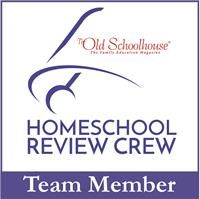
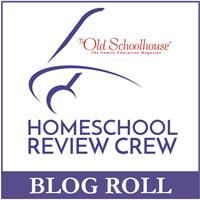














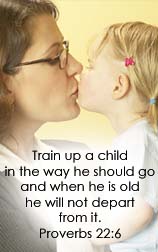



![[PREMIO2009.png]](https://blogger.googleusercontent.com/img/b/R29vZ2xl/AVvXsEjXD_Gx-wZ9EM5hXKrEYLksEBkYfRQtmb8VDVTDG_yyLggQoFIstZsh4zszdG20KqErZicRzEhiNYLty7j3IMXJYsABqkXjr8pp-ncj71xCbpxlXGbGpZq2fTuDQqq1RMKV4DPcDBnBViA/s1600/PREMIO2009.png)
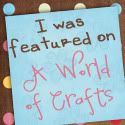
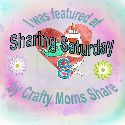


No comments:
Post a Comment
Thank you for visiting my blog today. I love to read your comments, so please leave me one if you have the time.
Blessings